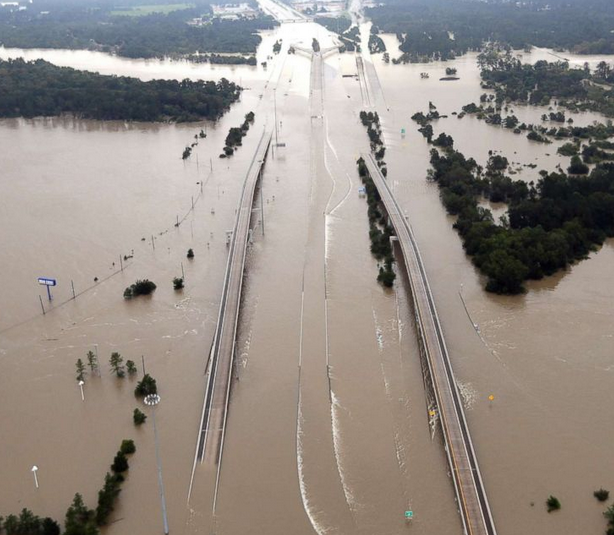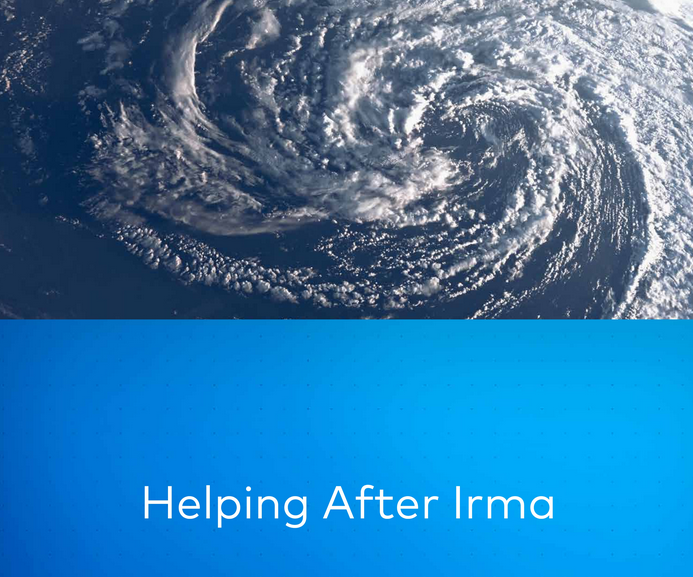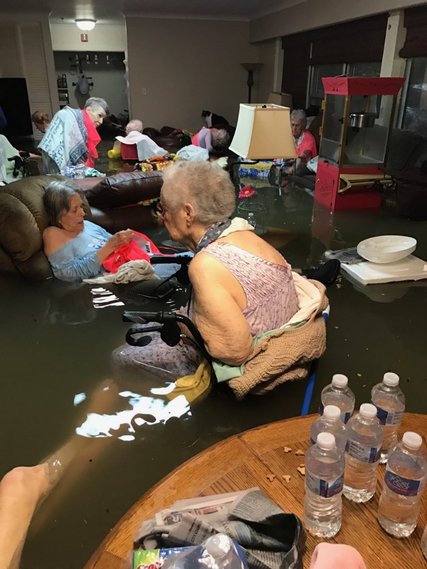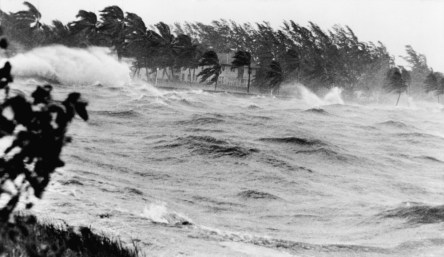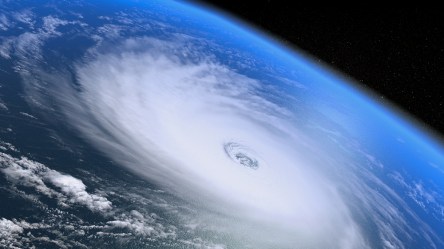In the wake of Hurricane Harvey, Yardi quickly established relief resources for clients and a donation platform for employees. To date, Yardi employees have contributed thousands of dollars to disaster relief efforts. The Yardi Foundation will match these employee contributions. Thurs far, Yardi has donated a significant chunk of its $1 million foundation pledge to the following organizations: ShelterBox USA specializes in emergency, temporary shelter for families displaced by natural disasters and conflict. The organization estimates that about 85 million people around the world have been made homeless by adverse natural and political conditions. Houston Food Bank leads the fight against hunger by facilitating food access for all. Last fiscal year, the Houston Food Bank distributed 83,000,000 nutritious meals through local organizations. Nearly 20 counties benefit from Houston Food Bank services. OneStar Foundation has partnered with the Michael and Susan Dell Foundation to rebuild Texas. The organizations set a goal to raise $100 million through concerts, special events, and other fundraisers. To date, the Rebuild Texas Fund has received $68.6 million to help with Hurricane Harvey recovery efforts. Southeast Texas Food Bank partners with over 130 non-profit agencies in eight counties. The non-profits provide approximately 90,000 meals to people in need each month. Greater Houston Community Foundation is one of the largest grant makers in the region. The Foundation helps donor direct their contributions towards causes that will have profound impact. One grant, the Mayor Turner and County Judge Emmett Establish Hurricane Harvey Relief Fund, has raised more than $67,400,400. Coastal Bend Food Banks, formerly Food Bank of Corpus Christi, offers two family programs and three programs that are targeted towards kids and teens. In addition to food security, the organization focuses on nutrition education. St. Bernard Project shrinks the time between disaster and recovery. The...
Recovery from Harvey
Aid Heads to Texas
In the wake of Hurricane Harvey, Congress has approved a $15.25 billion disaster aid package for the Federal Emergency Management Agency (FEMA). An additional package for Hurricane Irma recovery is likely under deliberation. The approved funds will contribute to, yet not cover, emergency assistance for regions of Texas and Louisiana overcome by Hurricane Harvey. The total funds needed for recovery may exceed $50 billion, according to analysts. The Gulf Coast of Texas received an unprecedented 50 inches of rain in less than four days. Homeland Security reports the loss of at least 70 lives and the destruction of more than 100,000 homes. Nearly 42 percent of Texans live in areas covered by the disaster proclamation. Beyond the Storm After Hurricane Allison, the 2014 City of Houston drainage study revealed that many of Houston’s poorest communities were inadequately prepared for “even modest storm events.” The National Community Reinvestment Coalition published a statement and map that shows the correlation between high-risk flood zones and communities of color. CNN reports that the city council approved $10 million to reduce drainage issues. Texas Housers and the Texas Organization Project claim that the City of Houston did not take action to protect its residents or mitigate the effects of Hurricane Harvey. Dam releases contributed to the devastation. On Monday, the US Army Corps of Engineers began to release water from the Addicks and Barker dams. The assumption was that the neighborhoods could better manage the water with controlled releases than uncontrolled overflow from the dams. Flood control officials in Harris County estimate that hundreds of properties flooded as a result of the controlled releases. Seeking Shelter Housing is the leading priority for disaster recovery specialists. Red Cross and partner associations opened 240 shelters in Texas and six shelters in Louisiana....
Helping After Irma
Yardi Offers Assistance
When Hurricane Irma devastated a string of Caribbean islands and loomed off the coast of Florida, it had been less than two weeks since Hurricane Harvey made landfall in southeast Texas, displacing thousands of people from their homes. Irma was the strongest Atlantic basin hurricane ever recorded. It triggered evacuation orders for 5.6 million people and made two landfalls before being downgraded to a tropical storm on Monday, September 11. For a second time this summer, our team members mobilized for a natural disaster response. Having recently created a housing website to help those affected by Harvey find temporary and permanent homes, we used this experience to quickly launch another dedicated housing registry to assist residents displaced by Irma. Leveraging our RENTCafé property marketing and leasing platform, RentCafe.com/HurricaneIrma allows displaced residents to find new housing. It also makes it possible for housing providers with properties in the affected and surrounding areas to quickly and easily list available units, some with special concessions. There is no charge for companies to list their properties on the website or for residents to use it. There is also a toll-free hotline that evacuees can call seeking housing assistance if internet is not available. The hotline can be reached at (844) 363-6317. With many clients in the affected areas, we’re offering disaster response assistance for clients affected by either hurricane, including additional program support and tools to help clients communicate with their residents during the aftermath. Taking care of our clients is a critical part of the Yardi mission statement, and representatives are reaching out now to offer these and other services at no charge. “The best-case scenario for everyone is that our disaster response efforts remain untested, but we have them in place so that we can aid...
Helping After Harvey
Yardi commits $1 million to recovery, launches housing website
On August 25, 2017, Hurricane Harvey made landfall in southeast Texas. The devastating tropical storm dumped more than 50 inches of rain and killed more than 50 people during its four-day rampage. Due to flooding caused by the hurricane, more than 30,000 people were displaced from their homes in Texas and Louisiana. The evacuees staying in shelters or with friends and relatives included many renters. Yardi software helps manage a significant percentage of the Houston multifamily housing market. Yardi committed $1 million to support nonprofit organizations in the rebuilding of the areas affected by the hurricane, and will match employee donations to the hurricane relief fund. But there was also an opportunity to assist those in need of temporary or permanent housing due to floodwater damage. “The state of Texas is about to undergo one of the largest recovery-housing missions that the nation has ever seen,” FEMA Administrator Brock Long said at a news conference Monday. “It’s a long process. Housing is going to be very frustrating in Texas.” Following in the footsteps of an effort to create a housing clearinghouse for Canadians who lost their homes in the May 2016 Fort McMurray wildfire, our RentCafe development team sprang into action. Using the RentCafe property marketing and leasing platform, they quickly built a housing website that will help displaced residents find temporary and permanent homes. The website (RentCafe.com/HurricaneHarvey) allows housing providers to post available units and for displaced residents to search for housing. Housing providers can visit the site to list properties at no charge. “We had experience with this kind of rush site build from our work on a housing registry website for the fire victims in Canada last spring,” said Chris Ulep, vice president of multifamily development at Yardi. “A collaborative effort got the website ready in just a couple of days. We hope that hurricane evacuees will find it useful as they search for new homes.” Yardi has also launched a hotline that evacuees looking for housing can call for housing assistance. The toll-free number is (844) 363-6317. Additionally, Yardi is offering disaster response assistance for clients on the RENTCafé platform, including nudge messaging, voice messaging and call automation to help clients communicate with their residents during the aftermath. Yardi representatives are reaching out to clients in the affected area to explain and offer these and other services at no charge. “We have many valued clients in the affected area, and it is important to us to assist those clients as well as their residents who may have been displaced. Thousands of people have lost their housing due to this devastating natural disaster, and we want to help in any way we can,” said Anant Yardi, president and founder of Yardi. The efforts to help were appreciated by those in the affected area. “Our industry is committed to housing and providing needed services like online housing portals and other resources to assist those in need. We applaud the efforts of our supplier partners to assist those impacted by the hurricane,” said Chris Newton, executive vice president of the Texas Apartment Association. Additional resources for Yardi clients in the region include: The Texas Apartment Association has links to relevant documents and policies that may affect Houston property owners and managers. Policies for tax credit properties during federally declared disasters. An Emergency and Disaster Library from the National Apartment Association, with Hurricane Harvey content. For those who would like to help or support agencies working on the recovery effort in Texas, there are many ways to do so. A few resources include: Relief organizations assisting with evacuee support: Red Cross: donate online or by text REDCROSS to 90999 to give $10 to American Red Cross Disaster Relief. The United Way Salvation Army – Text STORM to 51555 GlobalGiving Hurricane Harvey Relief Fund Greater Houston Community Foundation – Hurricane Harvey Relief Fund The Way Home Portlight Charity Navigator compiled a...
Seniors + Safety
Hurricane Harvey
Viral photo of flooded assisted-living facility in Houston demonstrates importance of disaster preparedness for senior living communities. With so many heartbreaking images of the devastation visited upon Houston by Hurricane Harvey, the photo of residents of the La Vita Bella assisted-living center in Dickinson stands out. The photo, which depicts several seniors submerged in murky, waist-high flood waters, triggered outrage after gaining widespread attention on Twitter and other social media outlets. By Sunday afternoon, an evacuation was underway, with all the eventually relocated to a nearby nursing home. With a new photo of the now safe and dry residents now making the rounds online, questions still linger regarding the delay in emergency services, with some of the resident’s family members telling CNN they were forced to post the photo on Twitter in an attempt to trigger a rescue effort. “They were basically told no one was coming because they couldn’t reach them,” Kim McIntosh, mother of resident Trudy Lampson, told CNN. “That’s when we decided to go ahead and tweet the photos.” Preparing For Disaster While the situation at La Vita Bella is, hopefully, an extreme example, the catastrophe triggered by Hurricane Harvey serves as yet another reminder of the importance of disaster preparedness. As Jay Shelton, Senior Vice President, at Assurance Risk Management, writes in a December 2015 issue of Senior Housing Business, “The best time to write one of these plans is, frankly, yesterday.” “Without prior planning, you leave your organization open to financial disaster,” he continues, “especially if you are forced to close operations for a period of time. In addition, without a proper plan to cope with a disaster, your facility may face lawsuits from vendors, employees or residents’ families claiming negligence.” Prioritize and Delegate When developing an emergency preparedness...
Hurricane Season
Prepping Your Residents
Hurricane season is upon us, and it will linger until the end of November. Fortunately for the continental US, the storms seem to have forgotten their curtain call! It’s unlikely that their delay will last forever, though. Use this downtime to make sure that your residents are prepared for nature’s fury. Make hurricane preparedness fun! While written information is helpful, it’s unlikely that residents will read it thoroughly and commit it to memory. What they will remember is a fun game night. Consider hosting a trivia night (one for families and a separate event for adults if your budget can swing it). Games make life-saving lessons memorable and prizes are a good incentive that boosts participation. Think of your prizes as an opportunity. Practical prizes can be fun if they look cool enough. A roll of duct tape is always helpful but it has zero aesthetic appeal, right? A snazzy water bottle with built-in filter, rugged multitool, and a cleverly designed LED flashlight are more eye-catching and still useful. The grand prize could include a complete preparedness kit, which has significant monetary value and can also save lives. Bonus: such utilitarian expenses are more easily approved by your controller. Get creative! Post evacuation plans. Make sure that building evacuation plans are clearly posted on each floor of each building. Also consider emailing residents a copy of the city evacuation routes. It’s unlikely that they will bother looking at it when you send it, but they may just save it for future references. Danger begins with the surge. Think projectiles and high winds are a hurricane’s greatest threats? Guess again. Storm surges take more lives than winds and debris. A storm surge can exceed 20 feet. That’s a wall of water two stories high; most...
Hurricane Season
Property Protection
With hurricane season in full swing on both coasts, we can all benefit from a refresher on hurricane preparedness for properties and residents. According to the National Weather Service, last year was relatively calm for hurricanes and tropical storms with property damages totaling just over $10 million. That’s a significant amount yet pales in comparison to $172 million in damages in 2012 and billions in recovery costs. Even the most basic planning can prevent costly property damage as well as injury and loss of life. Community safety tips Make sure that employees and residents are familiar with building-specific and community evacuation routes. It’s difficult to host community drills, so a push notification delivered via smartphone, article in the monthly newsletter, or social media post may draw the most attention. In high rise buildings, it is conventional knowledge to evacuate residents to lower floors, where wind conditions are more favorable. But be mindful of flood levels, informing residents to congregate on the appropriate floor that is above threat of water damage and below the worst wind. Interior rooms with fewer windows are favorable to exterior rooms. Keep shrubs and hedges trimmed. Top-heavy plants have a parachute effect in high winds. Keeping them trimmed low can minimize their ability to take flight. Call professional arborists to remove damaged or decaying limbs from trees even if they are not directly over buildings. Branches and limbs are projectiles during hurricanes, increasing the likelihood of injuries and damages. Close the pool and bring in any accessories and patio furniture that are not bolted down. In addition to regular wear and tear during storms, these items may become dangerous projectiles. Ensure that gutters and clean and repaired, especially as fall leaves become more plentiful. A simple clog can exacerbate flooding....


